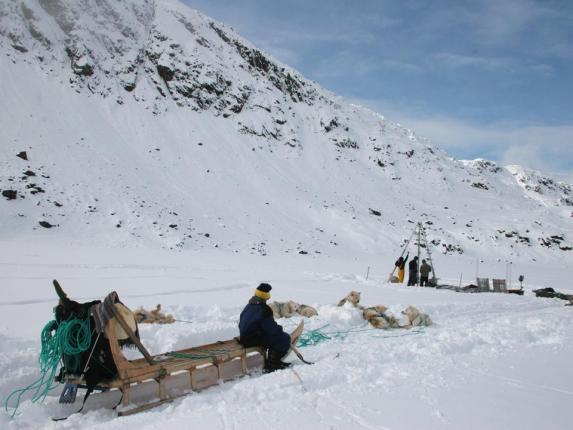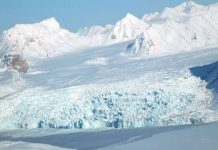NEW YORK, Dec. 7 (UPI) — Greenland’s glaciers are on retreat, shrinking at strikingly fast rates — at least twice as fast as any time over the last 9,500 years.
Researchers with Columbia University’s Earth Institute compared modern satellite data with records of glacier growth and decline gleaned from ice cores. Their findings were published last week in the journal Climate of the Past.
“If we compare the rate that these glaciers have retreated in the last hundred years to the rate that they retreated when they disappeared between 8,000 and 7,000 years ago, we see the rate of retreat in the last 100 years was about twice what it was under this naturally forced disappearance,” study co-author William D’Andrea, a paleoclimatologist at Columbia’s Lamont-Doherty Earth Observatory, explained in a press release.
Scientists were able to measure ancient glacier movements by measuring the levels of silt and sediments trapped in the ice cores collected from a glacial lake. As glaciers move, they grind the bedrock beneath them. The faster the movement, the more sediment, which is washed downstream by the glacier’s melt water.
Throughout Earth’s history, glaciers have advanced and receded as climate conditions change. Over the last few thousand years, Greenland has experienced less direct sunlight during the summer time. This would suggest slow but steady glacier growth.
But man-made climate change has resulted in warmer and warmer summer temperatures, erasing any advances made during the winter months, and leading to faster rates of melting.
“Two things are happening,” D’Andrea said. “One is you have a very gradual decrease in the amount of sunlight hitting high latitudes in the summer. If that were the only thing happening, we would expect these glaciers to very slowly be creeping forward, forward, forward.”
“But then we come along and start burning fossil fuels and adding carbon dioxide to the atmosphere, and glaciers that would still be growing start to melt back because summer temperatures are warmer,” D’Andrea said. “We see that in this record.”






